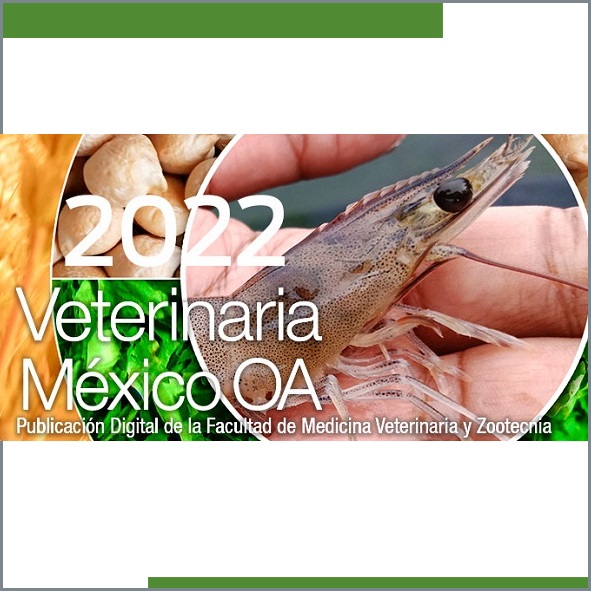Growth yield and health benefit of farm shrimp (Litopenaeus vannamei) fed in a pre-fattening phase with a diet based on wheat (Triticum sativum) and chickpea (Cicer arietinum) enriched with spirulina (Spirulina maxima) Feeding strategy for the benefit of shrimp farming
Main Article Content
Abstract
The formulation of diets from vegetable protein enriched with immunostimulants is a suitable feeding strategy for shrimp culture. This study evaluated a feed formulated with wheat (Tritium sativum) and chickpea (Cicer arietinum) enriched with spirulina (Spirulina maxima) for shrimp Litopenaeus vannamei farming. A feed based on wheat and chickpea (2.5:1) containing 3% spirulina was developed and characterized by proximal chemical analysis. The experimental feed was evaluated along with a commercial feed in a five-week field bioassay to determine the growth, survival, and health status of the juvenile shrimp. In addition, water salinity (mg·L-1) was monitored as an environmental stability factor for shrimp cultures. The proximal chemical composition of the experimental feed contained 17.5 ±0.1% protein, 2.2 ±0.3% lipids and 68.0 ±0.3% carbohydrates. The specific growth rate (0.22 ±0.05 g·days-1) of the shrimp under experimental feed did not show statistical differences in comparison with the commercial feed (P> 0.05). Also, it was determined that the shrimp fed with experimental feed presented a biomass production (0.74 ±0.17 g), survival rate (>98%) (P <0.05) and health status better than shrimp fed with commercial feed. The influence of salinity on shrimp survival was rule out (P> 0.05). This study demonstrated that the experimental feed offers a suitable diet in benefit of the performance and health of the shrimp.
Article Details
License

Veterinaria México OA by Facultad de Medicina Veterinaria y Zootecnia - Universidad Nacional Autónoma de México is licensed under a Creative Commons Attribution 4.0 International Licence.
Based on a work at http://www.revistas.unam.mx
- All articles in Veterinaria México OA re published under the Creative Commons Attribution 4.0 Unported (CC-BY 4.0). With this license, authors retain copyright but allow any user to share, copy, distribute, transmit, adapt and make commercial use of the work, without needing to provide additional permission as long as appropriate attribution is made to the original author or source.
- By using this license, all Veterinaria México OAarticles meet or exceed all funder and institutional requirements for being considered Open Access.
- Authors cannot use copyrighted material within their article unless that material has also been made available under a similarly liberal license.



